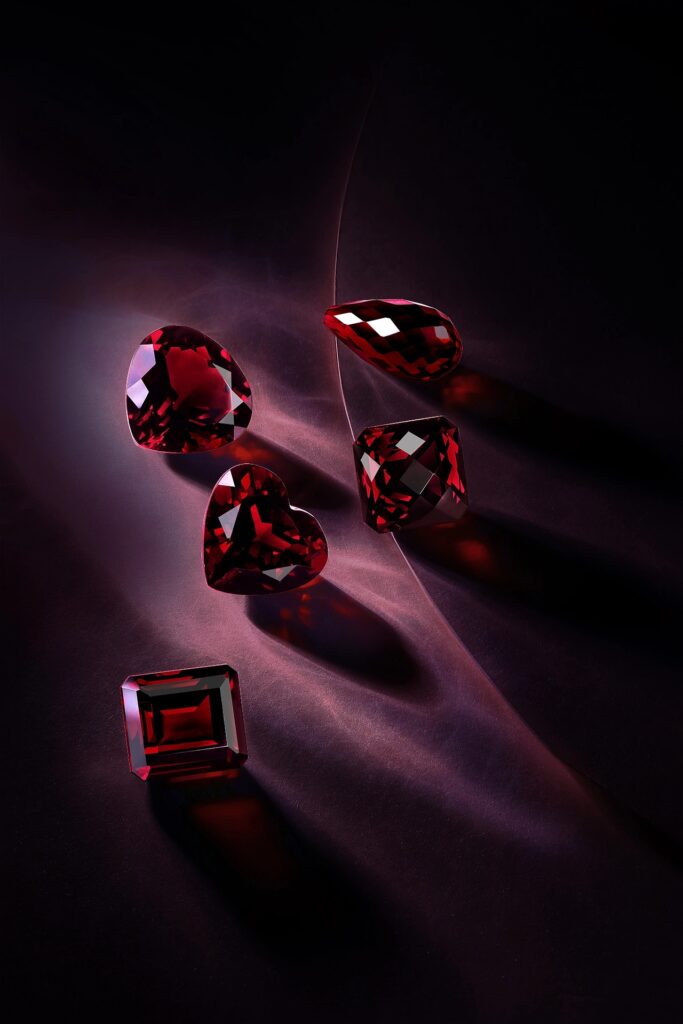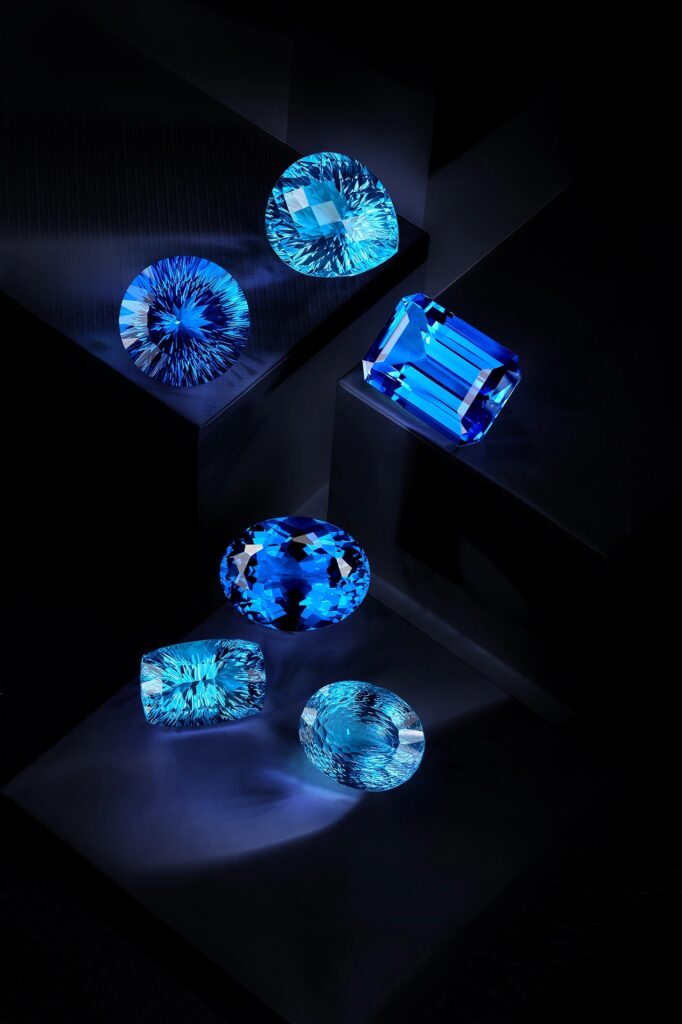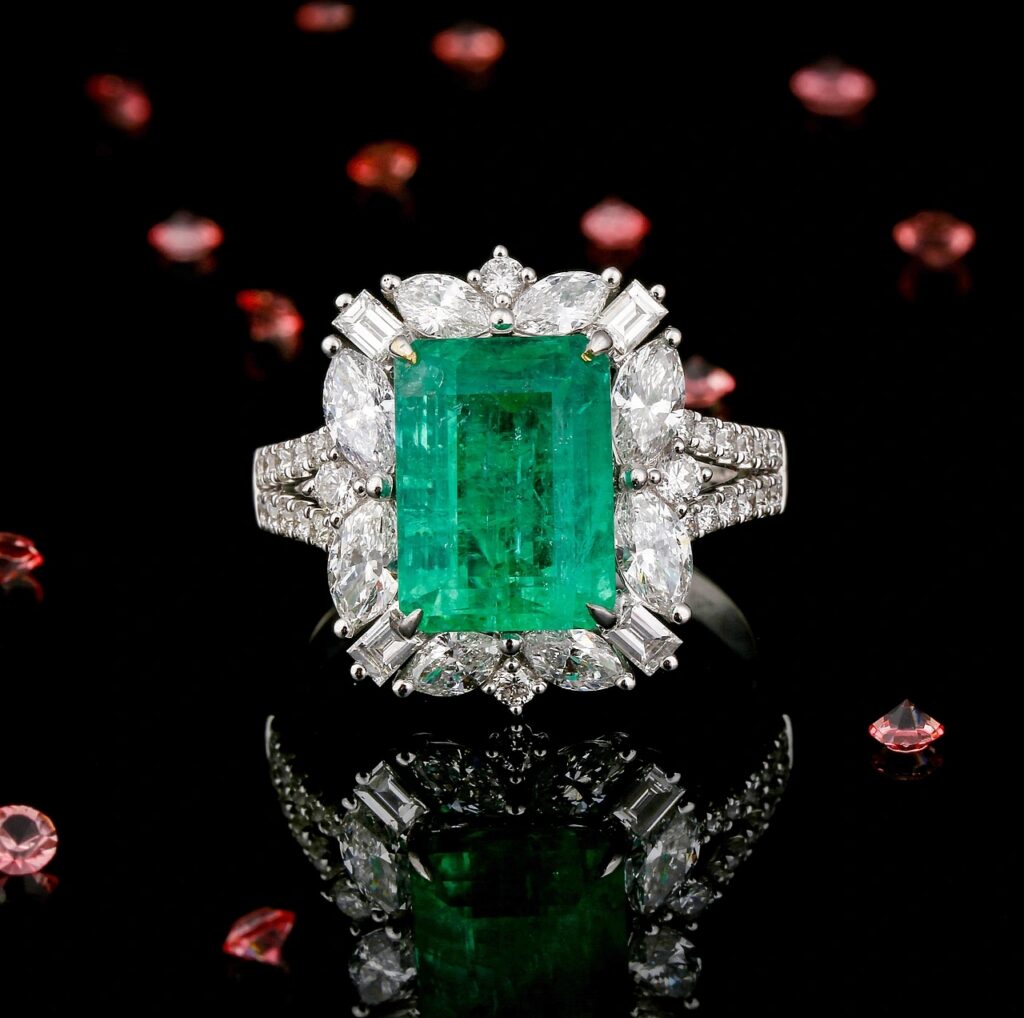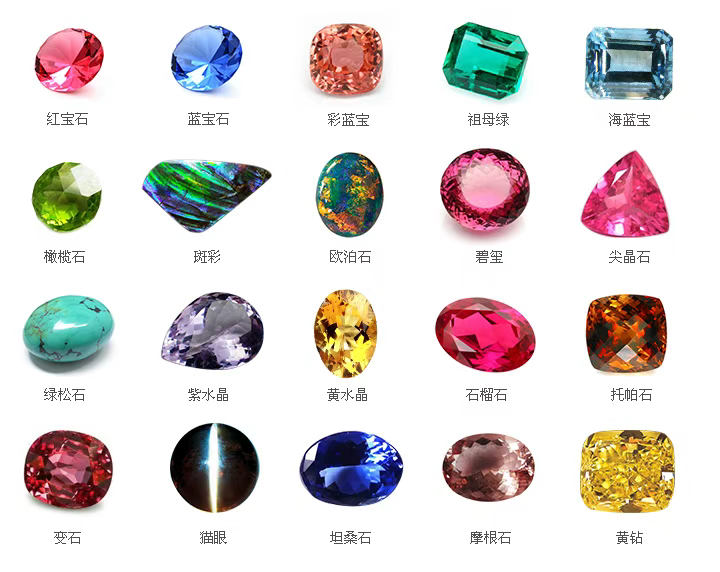Gems, as dazzling crystallizations of nature, have long embodied humanity’s pursuit of beauty and served as symbols of wealth. However, in the gemstone market, synthetic gems coexist with natural ones, posing a significant challenge for non-professionals to accurately distinguish between the two. This article will guide you through several key points to quickly grasp the fundamentals of distinguishing between synthetic and natural gemstones. So, how do you tell the difference? Read on to get started!

I. Synthetic Gems
Synthetic gems are further categorized into synthetic crystals and artificial crystals.
Synthetic Crystals: These are fully or partially manufactured substances with corresponding natural crystalline or amorphous counterparts. For example, synthetic rubies share identical composition, structure, and properties with natural rubies.
Artificial Crystals: These are artificially created substances without natural crystalline, amorphous, or composite counterparts.
Artificial Gems
Both synthetic and artificial gems hold significant value. Beyond supplementing natural gems, these crystal materials play vital roles across industries including manufacturing, scientific research, and national defense.
The most widely used ruby laser in industry relies on a core component made from synthetic ruby crystals. Ruby lasers impose stringent requirements on ruby crystals; natural rubies often contain impurities, fissures, and incomplete crystal structures, rendering them unsuitable for industrial use. Synthetic ruby crystals overcome these limitations of natural rubies.
In daily life, no matter how long we use our smartphones, we notice the camera lens remains undamaged. This is because a “sapphire glass” panel protects it—made from synthetic sapphire crystals. With a Mohs hardness of 9, sapphire resists scratches from common household items, making it ideal for camera lens protection. Many watch dials are also crafted from synthetic sapphire crystals.

II. Natural Gemstones
Natural gemstones, or crystalline gemstones, are naturally occurring minerals—single crystals or twins—that possess aesthetic appeal, durability, and rarity, making them suitable for crafting into jewelry.
Natural Gemstones
Natural gemstones typically exhibit soft, natural hues. Their colors may be complex, with multiple shades coexisting within a single stone, featuring intricate yet irregular patterns. Synthetic gemstones never display multiple colors within a single stone. When examined under a magnifier of 5x or greater, natural gemstones reveal internal inclusions like cotton-like, net-like, or tree-root-like structures, along with small fractures. Occasionally, distinct flattened growth lines are visible. Natural gemstones feel cool to the touch, smooth, and appear moist, as if oiled.
So how can one distinguish natural from synthetic gemstones?
01 Color: If the gem’s color is excessively vivid or uniformly consistent, it is likely synthetic.
02 Luster: Natural gems typically exhibit greater brilliance, while synthetic gems often display a “glass-like” sheen.
03 Inclusions and Cracks: Natural gems usually contain minor bubbles and cracks, whereas synthetic gems do not.
04 Weight and Hardness: Naturally formed gemstones exhibit variations in weight and hardness due to their organic growth. Synthetic gemstones, however, possess more consistent mass and hardness because they are manufactured under precisely controlled conditions.
Natural gemstones encompass a vast array of varieties, often classified into families, species, and subspecies using mineralogical taxonomy. We commonly categorize gemstones as high-grade, medium-to-low grade, or divide them into common and rare types. China’s national jewelry and gemstone standards do not provide a classification scheme or definitions for gemstone families, species, or subspecies. According to these standards, only the basic gemstone name needs to be determined. Internationally, there is no unified concept or classification system. Based on China’s national jewelry and gemstone standards, there is no division into high-grade, medium-to-low grade, common, or rare gemstone categories.

III. Gemstone Appreciation
01 Diamond
Also known as the diamond, its mineral name is diamond. A diamond is a product meticulously crafted from diamond rough. As the world’s hardest and simplest gemstone, it was anciently called “Kunwu Stone” and is universally known as diamond. Symbolizing chastity and purity, the name originates from the ancient Greek word “Adamant,” meaning an unyielding substance. It is also the hardest known natural material on Earth.
02 Alexandrite & Moonstone
Alexandrite is a chromium-bearing chrysoberyl, also known as the “stone of Alexander.” It appears green under sunlight and red under incandescent light, earning it the poetic description as “an emerald by day and a ruby by night.”
Legend has it that Tsar Alexander II of Russia wore a crown set with alexandrite during his birthday celebration, hence the stone’s name. Moonstone is the most valuable variety among feldspar gemstones. Its name derives from the soft blue iridescence it emits, reminiscent of hazy moonlight. Poets praise it as “a pale blue glow like autumn moonlight—who would believe such cool beauty could come from stone?” Believed to bring good fortune when worn, Native Americans regard moonstone as a “sacred stone.”
03 Ruby
Rubies and sapphires share the mineral name corundum. Those exhibiting a star effect (six rays) are called star sapphires, while other colors fall under sapphire. The finest rubies are blood red, specially termed “pigeon’s blood red”—a rare treasure sometimes more valuable than diamonds of equal weight. Garnet red is the next finest. Among the dazzling array of gemstones, rubies and sapphires stand as precious varieties. Their value and hardness, second only to diamonds, coupled with their shared mineral origin, earns them the title of “sister stones.” Internationally, rubies symbolize noble character and fiery passion.
04 Sapphire
Sapphire possesses a uniquely profound and mysterious blue—both serene and crystalline—that captivates the soul. However, sapphires exhibit not only blue but also a spectrum of other hues, each possessing an irresistible charm. Sapphires range in color from light to deep blue. Internationally, the finest sapphire color is termed “cornflower blue.” In China’s gemstone circles, a vivid, intense blue of the highest quality is called “ocean blue” or “ocean green.” Another prized variety is “teardrop blue.”

05 Zircon
Formerly known as zirconium stone or hyacinth stone, its transparent variety is valued as a gemstone, termed zircon. As early as ancient Greece, this beautiful stone captivated admirers. Legend holds that among the twelve stones adorning the breastplate of the Jewish high priest, zircon was present, referred to as “Chasbite.” Its alternative name “hyacinth stone” is said to derive from “Hyacinth,” a term popular today in Japan, Hong Kong, and mainland China. The name “zircon” originates from Arabic words meaning ‘red’ and “golden,” while ancient India called it the “eclipse stone.”
06 Opal
In mineralogy, opal belongs to the chalcedony family. Its mesmerizing, ever-changing colors resemble a rainbow dream, sparking magical imagination. Opal is the birthstone for October, symbolizing hope and contentment. The word “opal” originates from the Sanskrit “opala,” meaning gemstone. In Europe, opal is regarded as a symbol of good fortune. Ancient Romans called it “Cupid’s Boy,” a symbol of hope and purity. Chinese and Japanese cultures also cherish opals, though some Western Europeans dislike them, viewing their shifting hues as inauspicious.
This concludes today’s guide on distinguishing synthetic from natural gemstones. Identifying genuine gems requires combining observation, comparison, and professional appraisal. As consumers, maintain rationality when purchasing gemstones—avoid blindly chasing low prices or perfection. Simultaneously, learn to leverage professional resources to protect your rights. May this article offer valuable guidance on your gemstone appreciation journey, helping you discover your own natural beauty within the dazzling world of gemstones. Should you have further questions regarding gemstones, feel free to leave a comment for consultation.